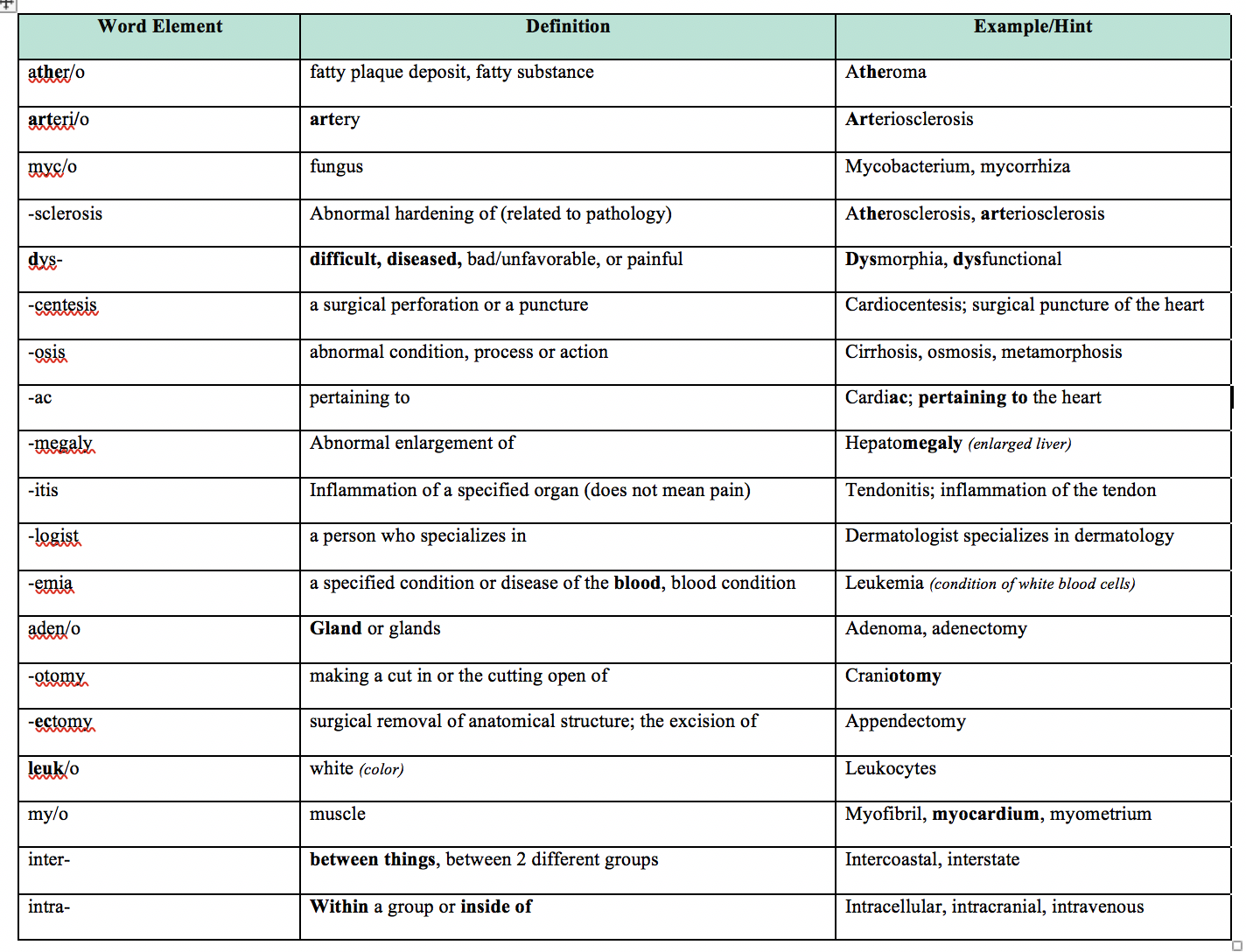Learning Medical Terminology
Becoming fluent in the universal language of medical terminology will likely translate to any career in healthcare. It has been one of the most useful classes I’ve taken online, but I wish I had taken it sooner. I ended up purchasing the text book, though not required if you take the class online, and used the ANKI flashcard program to study. If you’d prefer to save time on making your own flashcards search Quizlet for pre-made decks, like this one . If you are familiar with ANKI extensions, you are able to import your Quizlet decks to the ANKI system. (5 Must Have ANKI Extensions ) Required or not, I suggest taking MT I & II but students don’t have to sign up for a class to start learning the basic concepts. Here is a quick introduction to medical terminology with resources I found valuable during my studies.
Definitions
When coming across any medical term it is imperative to deconstruct each of the components (word parts or word elements) to best understand the explicit meaning of the word. Although there are some exceptions to the rule, medical terms are generated with a combination of word elements that make up the foundation of medical terminology: which include:
prefixes, suffixes, roots, combining vowels, and combining form.
However, not all medical terms contain all of the elements. Prefixes are word elements that are added to the beginning of a word to make the word more specific. Different prefixes are positioned at the beginning of a word to modify/alter its connotation which intentionally clarifies the meaning of the word root by indicating a more specified description. To elaborate, for the reader, prefixes often communicate shape, size, color, amount, location, or direction (this is not an exhaustive list). Again, prefixes are not always found in every medical term. Additionally, all medical terms are invariably comprised of at least 1 (one), word root, which is the main subject or central portion of the word. These may or may not have obvious definitions. Word roots often relate to an anatomical part of the body. However, in some cases multiple word roots can be combined to create a more specified medical term. Lastly, medical terms include a suffix, which a word element that is always attached to the end of a word root. A suffix also modifies the meaning of the word and can be about size, shape, color. The connotation of the suffix never changes, though it changes the meaning of the root. It customarily describes a condition, problem, or action. When breaking down any medical term, readers start by reading right to left, with defining the suffix first, prefix second, and roots last:
Steps to defining medical words.
Step 1: Define the suffix, or last part of the word
Step 2: If present, define the prefix, or first part of the word
Step 3: Define the root, or central part of the word, often located in the middle of the word
Word Elements & Definitions
Memorizing common word elements is more manageable than memorizing random medical terms. Here is sample word element table:
Digital resources:
Like topics like this? Leave me a comment! I’d love to hear your thoughts!



